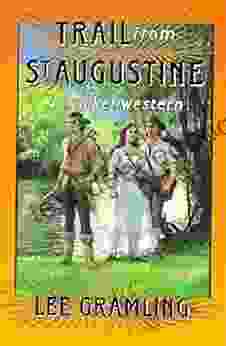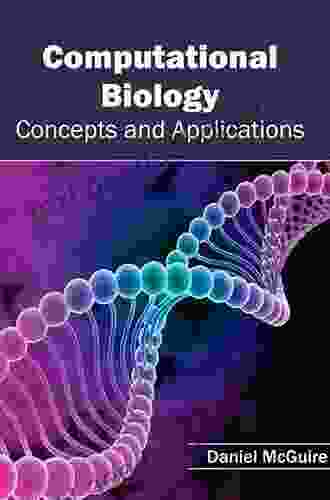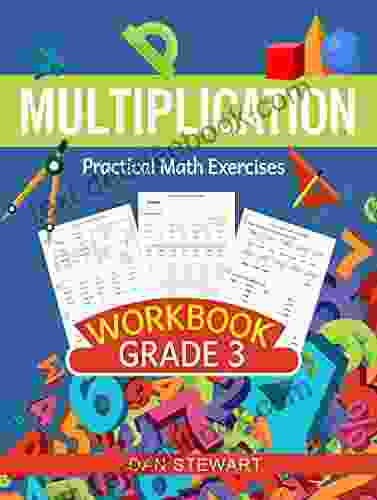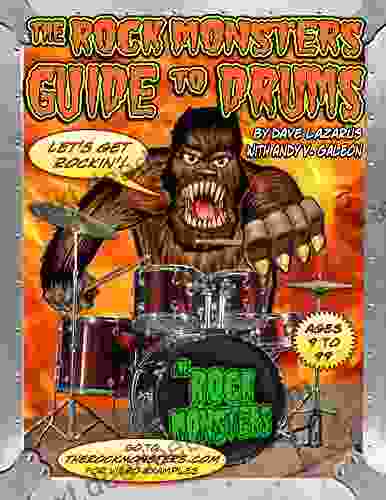Maps, Sequences, and Genomes: An Exploration of Interdisciplinary Statistics

4.5 out of 5
| Language | : | English |
| File size | : | 22128 KB |
| Text-to-Speech | : | Enabled |
| Screen Reader | : | Supported |
| Enhanced typesetting | : | Enabled |
| Word Wise | : | Enabled |
| Print length | : | 745 pages |
In the intersection of spatial data, genomic information, and statistical modeling lies a captivating field of statistics: interdisciplinary statistics. This discipline weaves together the strengths of various domains, enabling us to delve into complex biological and environmental systems with unprecedented depth. In this article, we embark on a journey to explore the intricate connections between maps, sequences, and genomes, revealing how they synergistically contribute to our understanding of the world around us.
The Interdisciplinary Landscape
Maps, sequences, and genomes represent distinct yet interconnected aspects of our world. Maps provide a spatial dimension, enabling us to visualize and analyze data across geographical locations. Sequences, on the other hand, capture the order of elements, whether it be nucleotides in DNA or amino acids in proteins. Genomes, the complete set of genetic information, encompass both spatial and sequential characteristics, carrying a treasure trove of information about living organisms.
Interdisciplinary statistics bridges these disciplines, providing a framework for analyzing and modeling complex data that cannot be fully understood within the confines of a single domain. By combining spatial, genomic, and statistical techniques, we gain a more holistic view of biological systems, unraveling the intricate relationships between genes, environments, and phenotypes.
Maps and Spatial Data
Maps have long been a powerful tool for representing and analyzing spatial data. In the realm of biology, maps are used to visualize the distribution of species, disease outbreaks, and environmental variables. By overlaying different layers of information, such as land cover types, elevation data, and population density, we can identify patterns and relationships that would otherwise remain hidden.
Spatial statistics provides a comprehensive set of methods for analyzing spatial data. These methods allow us to quantify spatial autocorrelation, identify clusters and outliers, and model spatial processes. By incorporating spatial information into statistical models, we improve their accuracy and predictive power.
Sequences and Genomic Data
Advances in DNA sequencing technologies have revolutionized the field of genomics. The availability of vast amounts of genomic data has enabled us to explore the complexities of biological systems at an unprecedented scale. Sequences, the linear arrangements of nucleotides or amino acids, hold a wealth of information about genes, proteins, and their functions.
Statistical methods play a crucial role in analyzing and interpreting genomic data. Sequence alignment algorithms, for example, are used to compare sequences and identify regions of similarity or difference. Statistical models are also employed to identify patterns in genomic data, such as motifs, regulatory regions, and genetic variants associated with diseases.
Genomes and Statistical Modeling
Genomes, the complete set of genetic information, are complex systems that encode the blueprints of life. Statistical modeling provides a powerful toolkit for analyzing and understanding the structure and function of genomes. Bayesian statistics, in particular, has emerged as a valuable approach for integrating diverse sources of information, such as genomic data, environmental data, and phenotypic data.
Statistical models can be used to identify and characterize genomic regions associated with specific traits or diseases. They can also be employed to predict the phenotypic consequences of genetic variants and to explore the evolutionary history of species.
Case Studies
The interdisciplinary field of maps, sequences, and genomes has led to numerous groundbreaking discoveries in biology and environmental science. Here are a few notable case studies:
- Mapping the Human Genome: The Human Genome Project, a monumental undertaking that sequenced the entire human genome, relied heavily on interdisciplinary statistics to assemble, analyze, and interpret the vast amounts of genomic data generated.
- Predicting Disease Risk: Statistical models have been developed to predict the risk of developing complex diseases, such as cancer and heart disease, based on genetic variants identified through genome-wide association studies.
- Tracking Species Distributions: Spatial statistics are used to track the distribution and abundance of species over time. This information is crucial for conservation efforts and understanding the impacts of climate change on biodiversity.
- Modeling Gene Expression: Statistical methods are employed to model the expression of genes across different cell types and tissues. This knowledge helps us understand the molecular basis of development, disease, and response to environmental stimuli.
Maps, sequences, and genomes represent a powerful triumvirate of information that, when combined with interdisciplinary statistics, unlocks a world of possibilities for understanding complex biological and environmental systems. By bridging the realms of spatial data, genomic information, and statistical modeling, we gain a more comprehensive and nuanced perspective on the intricate workings of our world.
As the field of interdisciplinary statistics continues to evolve, we can expect even more groundbreaking discoveries and transformative applications. This exciting and dynamic discipline holds the promise of revolutionizing our understanding of life, health, and the environment.
4.5 out of 5
| Language | : | English |
| File size | : | 22128 KB |
| Text-to-Speech | : | Enabled |
| Screen Reader | : | Supported |
| Enhanced typesetting | : | Enabled |
| Word Wise | : | Enabled |
| Print length | : | 745 pages |
Do you want to contribute by writing guest posts on this blog?
Please contact us and send us a resume of previous articles that you have written.
 Book
Book Chapter
Chapter Story
Story Reader
Reader Library
Library Paperback
Paperback Magazine
Magazine Newspaper
Newspaper Paragraph
Paragraph Sentence
Sentence Bookmark
Bookmark Glossary
Glossary Bibliography
Bibliography Foreword
Foreword Annotation
Annotation Manuscript
Manuscript Codex
Codex Bestseller
Bestseller Classics
Classics Library card
Library card Narrative
Narrative Librarian
Librarian Catalog
Catalog Card Catalog
Card Catalog Borrowing
Borrowing Stacks
Stacks Archives
Archives Periodicals
Periodicals Study
Study Lending
Lending Academic
Academic Reading Room
Reading Room Rare Books
Rare Books Literacy
Literacy Study Group
Study Group Thesis
Thesis Storytelling
Storytelling Awards
Awards Book Club
Book Club Theory
Theory Vickie Griggs
Vickie Griggs Margaret A Majumdar
Margaret A Majumdar Lindsay Marcott
Lindsay Marcott Tom Inglis
Tom Inglis Thomas D Grant
Thomas D Grant Diana Drew
Diana Drew Julie Leininger Pycior
Julie Leininger Pycior Jared R Rawlings
Jared R Rawlings Alys Eve Weinbaum
Alys Eve Weinbaum Duncan Bhaskaran Brown
Duncan Bhaskaran Brown Kristie Lynn Higgins
Kristie Lynn Higgins Ownself Greatness
Ownself Greatness Penny Reid
Penny Reid Joel Selvin
Joel Selvin John Augustine Zahm
John Augustine Zahm David M Ward
David M Ward Carol Matz
Carol Matz D M Haggard
D M Haggard John Nathan Diamond
John Nathan Diamond Bryan S Bush
Bryan S Bush
Light bulbAdvertise smarter! Our strategic ad space ensures maximum exposure. Reserve your spot today!

 Cormac McCarthyUnveiling the Enchanting Trail from St. Augustine to the Cracker Western...
Cormac McCarthyUnveiling the Enchanting Trail from St. Augustine to the Cracker Western...
 Cody RussellIssues and Alternatives in Educational Philosophy: Exploring the Complexities...
Cody RussellIssues and Alternatives in Educational Philosophy: Exploring the Complexities... Ezekiel CoxFollow ·13.7k
Ezekiel CoxFollow ·13.7k Louis HayesFollow ·11.2k
Louis HayesFollow ·11.2k Scott ParkerFollow ·5.5k
Scott ParkerFollow ·5.5k Richard SimmonsFollow ·9.8k
Richard SimmonsFollow ·9.8k William PowellFollow ·17.8k
William PowellFollow ·17.8k Julian PowellFollow ·9.6k
Julian PowellFollow ·9.6k Jayson PowellFollow ·19.9k
Jayson PowellFollow ·19.9k Jon ReedFollow ·12.7k
Jon ReedFollow ·12.7k

 Jack Powell
Jack PowellThe United Nations Renaissance: A New Era of Global...
The United Nations was founded in 1945 in...

 Banana Yoshimoto
Banana YoshimotoMastering the Art of Critical Analysis: A Comprehensive...
Ida B. Wells-Barnett, a...

 Brian West
Brian WestWhat You Need To Know About The Inner Lives Of Men:...
Understanding the...
4.5 out of 5
| Language | : | English |
| File size | : | 22128 KB |
| Text-to-Speech | : | Enabled |
| Screen Reader | : | Supported |
| Enhanced typesetting | : | Enabled |
| Word Wise | : | Enabled |
| Print length | : | 745 pages |














